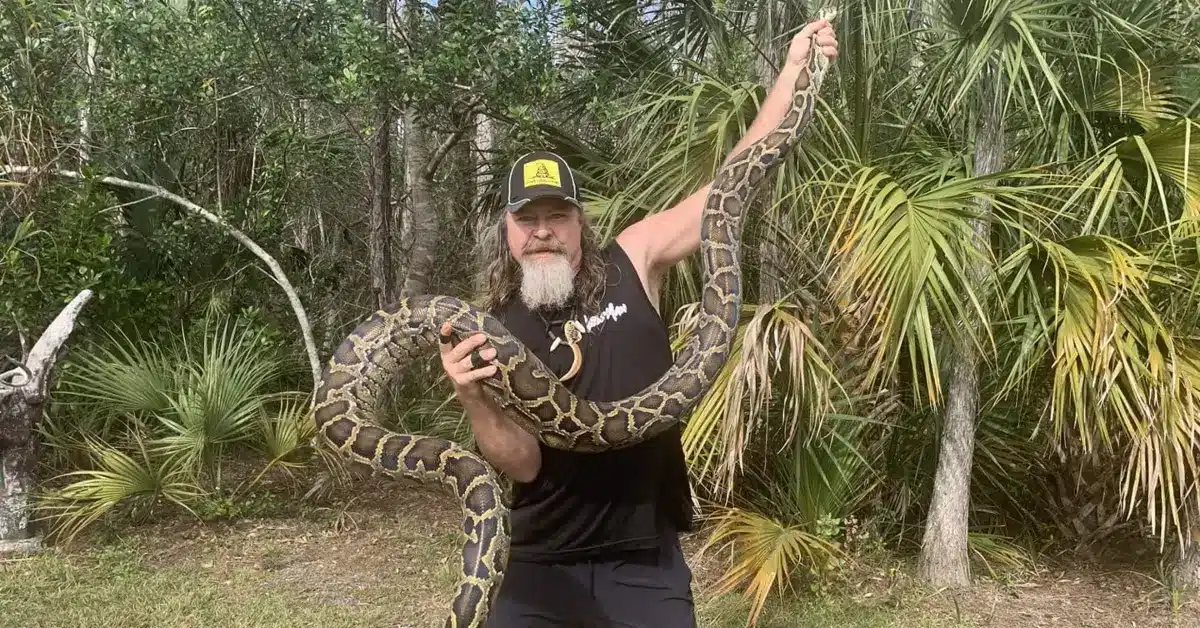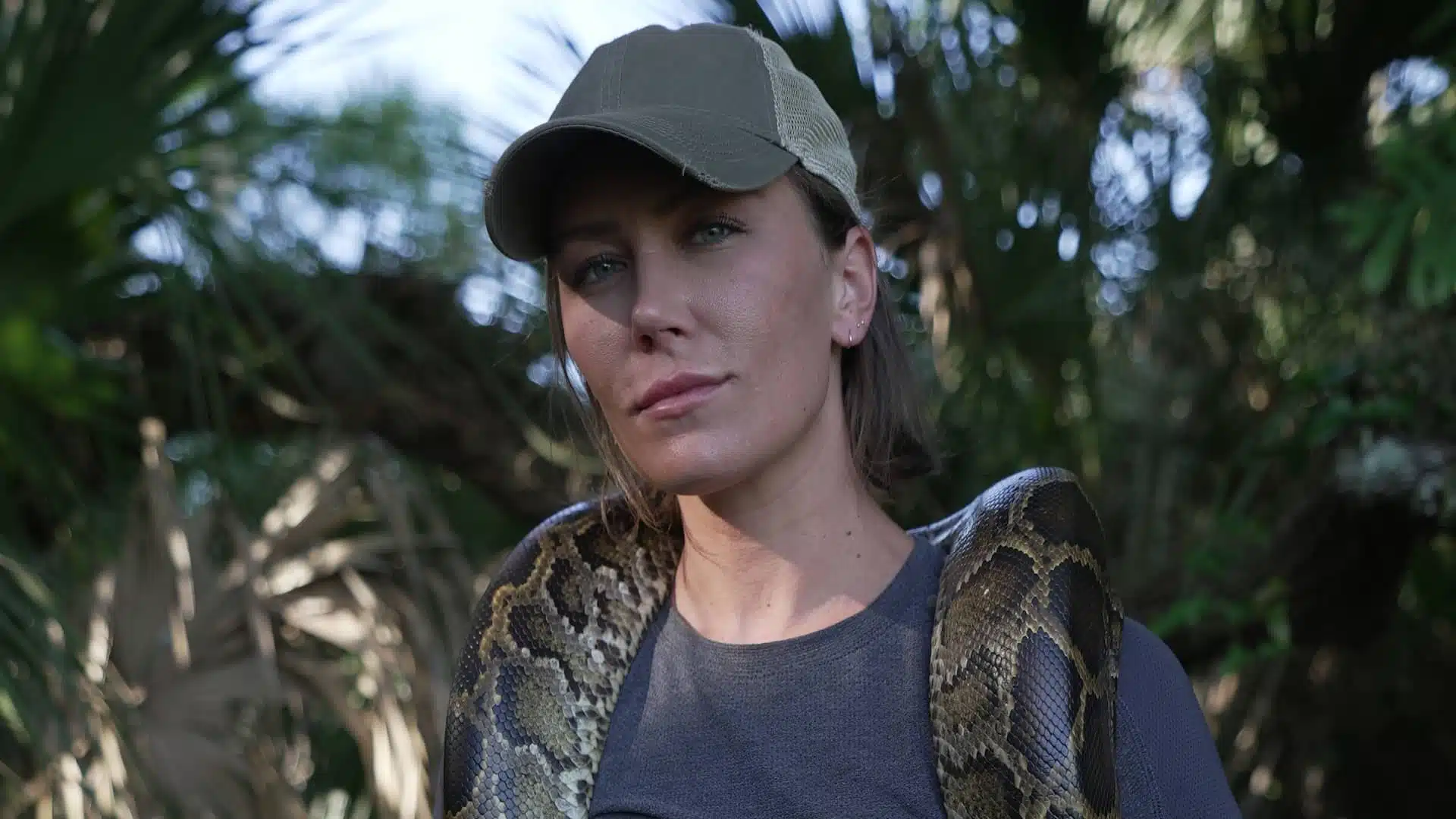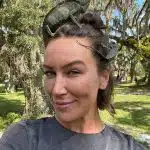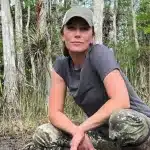Tess Lee made a great addition to History Channel’s “Swamp People: Serpent Invasion.” Ridding the Florida Everglades of invasive pythons was a sharp contrast to her glammed-up world as a social media influencer. Fans were excited to see how she was holding up against these apex predators in season three of the reality television series, which began airing in January 2023.
“Swamp People: Serpent Invasion”
The TV series followed a group of hunters as they went to rid the Everglades, the tropical wetlands in the southern portion of Florida, of Burmese pythons. The Everglades, home to extraordinary wildlife and a great diversity of plants, provides significant benefits to the Floridians as its ecosystem supplied drinking water to one-third of its population, as well as to the irrigation system of most of the state’s agriculture.
Why eradicate pythons?
It appeared that its ecosystem was being threatened by invasive species such as the Burmese python, as it preyed on the native wildlife and was robbing the area’s natural predators of their primary food sources. Entire species of animals were in danger of being wiped out, as these snakes had no natural predators. Burmese pythons were native to Southeast Asia, so many were wondering how they ended up in Florida. It was believed that thousands of these snakes were imported to be sold as exotic pets in the 1970s and ‘80s.
Unfortunately, as these could grow to 20 feet, over six meters in length with a girth of around 43.5 inches, or close to a meter which was said to be the thickness of a telephone pole, and weigh more than 250 pounds, about 100kgs, many owners were unable to handle them, and so were released into the wild illegally, although some managed to escape on their own. Some experts believed that after category five storm Hurricane Andrew struck Florida in August 1992, it destroyed a python breeding facility, releasing countless snakes into the area. They then began to breed in the wild, and established themselves; it was said that they could produce clutches of eggs ranging from eight up to over 100, which could incubate for two to three months.
Python Elimination Program of the government
According to reports, hundreds of thousands of these pythons were making the Everglades their home. As such, the South Florida Water Management District Governing Board launched the Python Elimination Program, in which they incentivized individuals to locate and remove invasive species such as Burmese pythons, Northern and Southern African pythons, Boa Constrictors, and Green anacondas on designated lands. To be eligible as a hunter or a python removal agent, one had to be at least be 18 years old, have a valid driver’s license, not been convicted of a felony or a wildlife-related offense within the last five years, and be willing to sign a waiver of liability.
The agents would receive compensation for actively searching for pythons at $10 to $15 an hour, depending on the area, for up to 10 hours a day. They would be required to use a mobile device with GPS-tracking software and an electronic data collection system as a way to monitor and verify their time and location. On top of that, they would be paid $50 for each python that measured up to four feet in length and an additional $25 for each foot measured over that, so the longer the snake, the higher the amount. If they found an active nest, they would be paid an extra $200 after it was verified.
We agree 🙃@Swag_Terrific! Catch Swamp People: Serpent Invasion tonight at 21:05 on History Ch186. You can also stream it live on the DStv App: https://t.co/IKAeKnfQIk pic.twitter.com/ngOz7Jk2L4
— DStv (@DStv) December 8, 2020
The cast
“Swamp People: Serpent Invasion” is a spin-off series of “Swamp People,” which featured the lives of alligator hunters who culled the population of apex predators in the Atchafalaya River Basin swamps in Louisiana. With alligator season over, Troy Landry, his son Chase, Bruce Mitchell and Zak Catchem entered the Everglades to catch pythons. Since they could handle alligators, they would have no qualms battling against another apex predator. They were joined by retired firefighter and snake wrangler Bill Booth.
In season one, they removed more than 400 Burmese pythons from the Everglades and made over $100,000. Troy hoped they could do better in season two, after gaining knowledge and experience the previous year. Bill constructed a new swamp buggy, a 1963 Dodge Power Wagon, and this amphibious four-wheel vehicle with an elevated body was perfect for navigating the swamps or marshes, especially during the rainy season. They were split into two teams, with Florida native Bill, Troy and Chase in one team and Zak and Bruce in the other one, which was a way for them to cover more ground and so hopefully catch more snakes.
Tes Lee joined “Swamp People: Serpent Invasion” in season three
More hunters came to help, and they were split into four groups with the goal of catching as many as they could. Alligator hunter Pickle Wheat teamed up with Troy Landry, and it seemed that they picked up from where they left off in “Swamp People”; a remote camp deep in the Everglades served as his base of operation. Pickle had been around snakes growing up, but she’d never handled or caught one before. For their first catch, Troy was bitten as he was watching out for Pickle, and took his eyes off the snake for a second.
Snake hunter Dusty Crum, nicknamed The Wildman, was used to hunting solo. He lived in the middle of the Everglades, and his idea of breakfast was an iguana or other invasive species around his home. His skills and experience in hunting were showcased when he chanced upon two pythons mating at night, and with his dog providing a distraction, he grabbed the pythons right at the same time and bagged them. Zak brought his childhood friend and hunting buddy, Aaron Crum, whom he described as a modern master of ingenuity when it came to the outdoors. Aaron had been catching snakes for 25 years, and was keen to help out in this hunt.
https://www.instagram.com/p/Caf5WgQO-6M/
Bill partnered with Tes Lee, a fifth-generation Florida native, and an experienced outdoorswoman; the two were friends and had hunted snakes together a few times in the past. Bill said that she was good at spotting serpents, and not afraid of them. Tes said that snakes had been a huge part of her life, and that she’d been hunting them ever since she could remember. She shared a few photos on her Instagram account of her holding them when she was just a kid.
Hunting in the Everglades
The Everglades was vast, so the group had a wide area to cover in their search for these Burmese pythons. It didn’t help that the terrain was rough, and the vegetation sometimes impenetrable. However, having Bill, who knew the area like the back of his hand, and Zak, another Florida native, had upped their chances. Catching Burmese pythons was another matter, because although they were non-venomous, they were still dangerous as they could squeeze the life out of their prey. They were constrictors, so wrapped their bodies around their prey and squeezed it until it suffocated. They could eat animals as big as alligators or deer, and even humans. It could bite too, and its strike was as fast as 70 milliseconds, which was said to be three times faster than the blink of an eye. Its bite was vicious, with multiple rows of teeth that were curved and extremely sharp, and if the puncture was deep enough, it could cause internal damage. In catching them, one had to grab the tail and another should grasp it right behind its head, making sure it was not too low that it could turn its head and bite, as it was big and heavy, and would try to constrict whoever was holding it. Once they had a good grasp of the snake, it was put inside a snake bag or sack.

The danger to the ‘removal agents’ wasn’t limited to these pythons, as they also had to watch out for other wildlife in the area, including cottonmouth or water moccasin, which was extremely venomous, able to prevent blood from clotting, so it could cause internal bleeding and death.
Eating Burmese python
In one episode, before they went hunting for these serpents in the dark, Bruce suggested eating one that they caught earlier. Bill skinned it while Bruce cooked it. To collect the bounty on a python, it didn’t matter if it was dead or alive, so its skin would be sufficient proof of its capture when they presented it to a state checkpoint. It was said that the skin, meat, fat and skeleton could be harvested for food, clothing and oils. Troy said the only way he would consume a snake was if he was starving to death, but since it was their food, he had no choice but to eat and he found it disgusting as it tasted like he was chewing a part of a rubber tire of his pickup truck; he gave it a minus five in a scale of one to 10.
A thousand-dollar bet each on the biggest and the mostest
As the group was discussing the next hunting ground, they split into two teams and had a bet going for which would catch the biggest and the most number of pythons. Zak and Bruce went to an old bomb shelter believed to have become a breeding ground for pythons, while Bill, Troy and Chase hunted around Bill’s camp, which had been flooded the previous year. After hours of hunting, Troy’s group ended with the most pythons at 14 worth, nearly $4,000, but only a 10.5-footer as the longest one. Zak’s team caught the biggest at 14 feet worth $500, and with nine snakes in all, they got over $2,500. At the end of the competition, they all earned money, and had fun while doing it.
Meet Tes Lee
Tessa Lee was born in August 1989, in Tarpon Springs, Florida, the oldest of four children to D. Travis M and Jill Noblit MacGregor. Her mother authored “Once Upon A Bayou: The Life and Legacy of Tarpon Springs Pioneer, G. E. Noblit, Sr.” released in 2006, and “Unsinkable: The Inspiring True Story of USS Indianapolis Survivor: Robert P. Gause, QM1” published in 2014.
She had over 100,000 followers on Instagram, and was quite successful as an influencer. Tes shared bits and pieces of her personal life from childhood to her marriage to Milo Talokonnikoff in 2018. He was a 2021 Tampa Bay Business Journal’s 40 Under 40 Honoree, as the Chief Operations Manager of an IT solutions company called Iron EagleX, Inc. The two enjoyed going on adventures, as they explored the wilderness in South Florida.
What is Tes Lee doing now?
Her followers must have been surprised by this recent development in her life, as it seemed that she ventured into snake hunting via “Swamp People: Serpent Invasion,” which premiered in January 2023. As a native Floridian, she was upset by how these invasive pythons had taken over the Everglades, so every opportunity to get out there to help with this problem, she was going to take it.
First catch in the show
It was during the dry season when she and her hunting partner Bill Booth went to the Everglades, and on the way to the spot that he was sure would be filled with snakes, he spotted one and they ran to where it was resting. Nothing about catching a python was easy because it would put up a fight. Tes grabbed the tail but quickly dropped it when the head moved towards her. In an effort to escape them, the snake climbed a tree and was poised to strike at them. Bill was a veteran at this, so he quickly grabbed it behind its head, and then they untangled it from the tree – this snake was worth $375, not bad for their first catch. However, the uncharacteristic behavior of a big snake climbing a tree meant they had to look not just at ground level but also up in the trees as they could strike from anywhere.
Bagged her first snake
Tes was pretty competitive, and liked to be good at what she was doing, so when the one she spotted managed to escape by burrowing through a hole in the ground, she was annoyed with herself for not being quick enough to react. Bill felt that they had to learn to work together as a team, to know what each one was thinking or read one’s movement to be effective. Having caught only one snake, they believed they would have a better chance come nighttime. She was aware of how dangerous it was, but was focused on what she had to do. They bagged four big ones, but Tes was yet to catch one; she was always grabbing it by the tail, going nowhere near the head. She admitted to being a little bit cocky about not getting bit during their hunt so far, which was her rationale behind why she ended up being bitten on several of her fingers before she grabbed one behind its head and caught her first snake. Their total catch for the first 24 hours of hunting was worth $1,500.
Venturing into a rumored secret laboratory
Tes and Bill went to a building facility that operated back in the Cold War days, which some of his friends had mentioned to him. The rumor was that the government was conducting secret experiments on animals for research purposes, which the Feds denied. It had since been abandoned and was lying in ruins, so Bill thought that they could check it out, hoping to find pythons in there. As they were inspecting what was left of a cage, they saw a snake nearby. Tes was a little freaked out as the feisty snake seemed to hone in on her, repeatedly striking to reach her; fFortunately, she got ahold of it before it could bite her. The area was getting creepier by the hour because of the stories she heard of what went on in the secret laboratory, but it didn’t stop her from doing her job. By nighttime, the pair had caught nine pythons, the last one a nine-footer worth $275.
https://www.facebook.com/tesleeee/posts/pfbid02hkqa6ibxbF1Zjj5buaNsvYgU3RmFpKHrh2hXy3WARedpf96Swgm1vTCBMKoShpiUl
Pythons on a white sandy beach
Tes took Bill to a hunting ground where she’d found signs of snakes when she last went there with her husband. It was one of the islands bordering the Everglades that remained uninhabited, so there was a good chance that pythons thrived here. Bill had some doubts as he saw the white sandy beach, and said that all that was missing were fancy drinks. As they went deeper into the forest, the vegetation grew thicker and within minutes, they caught their first one, an eight-footer. Bill couldn’t believe that they’d found one in such an unusual place. However, after a couple of hours with no other snakes in sight, they stopped the hunt to rest and eat. Tes, who brought her diving gear, went spearfishing. She caught a big fish, and they cooked and ate it on the boat. After that, they resumed their hunt and caught an aggressive 12-footer worth $375. Before the night was through, they ran out of snake bags as they caught a couple more worth $700.
Tes had proven herself to be a great hunting partner as she was quick in spotting pythons and catching them. Fans couldn’t wait to see more of her in upcoming episodes.











Leave a Comment